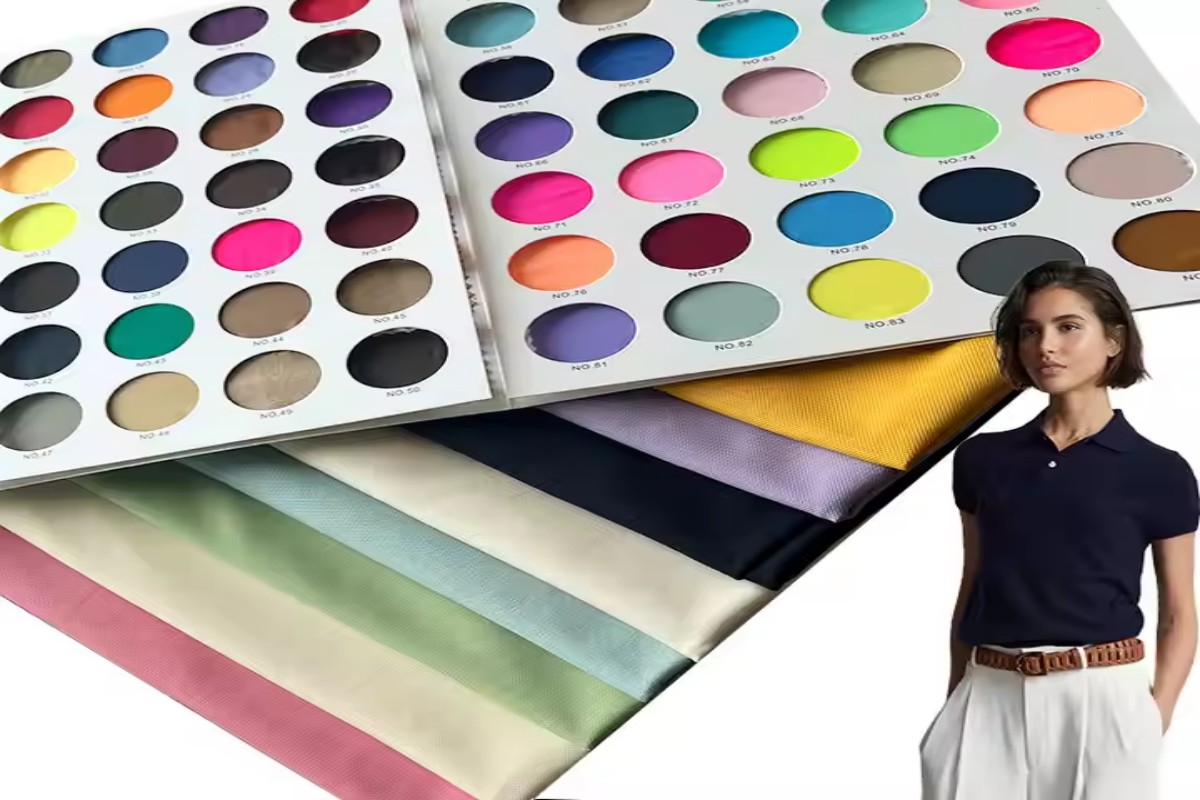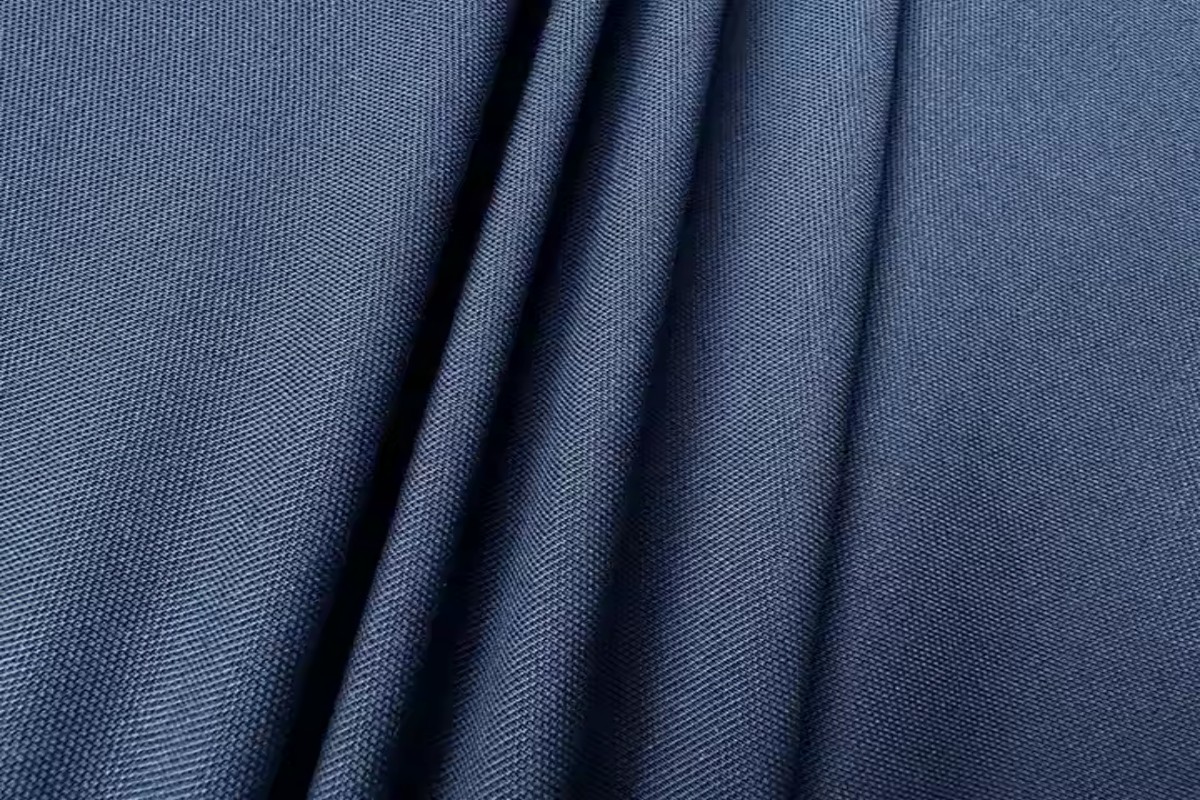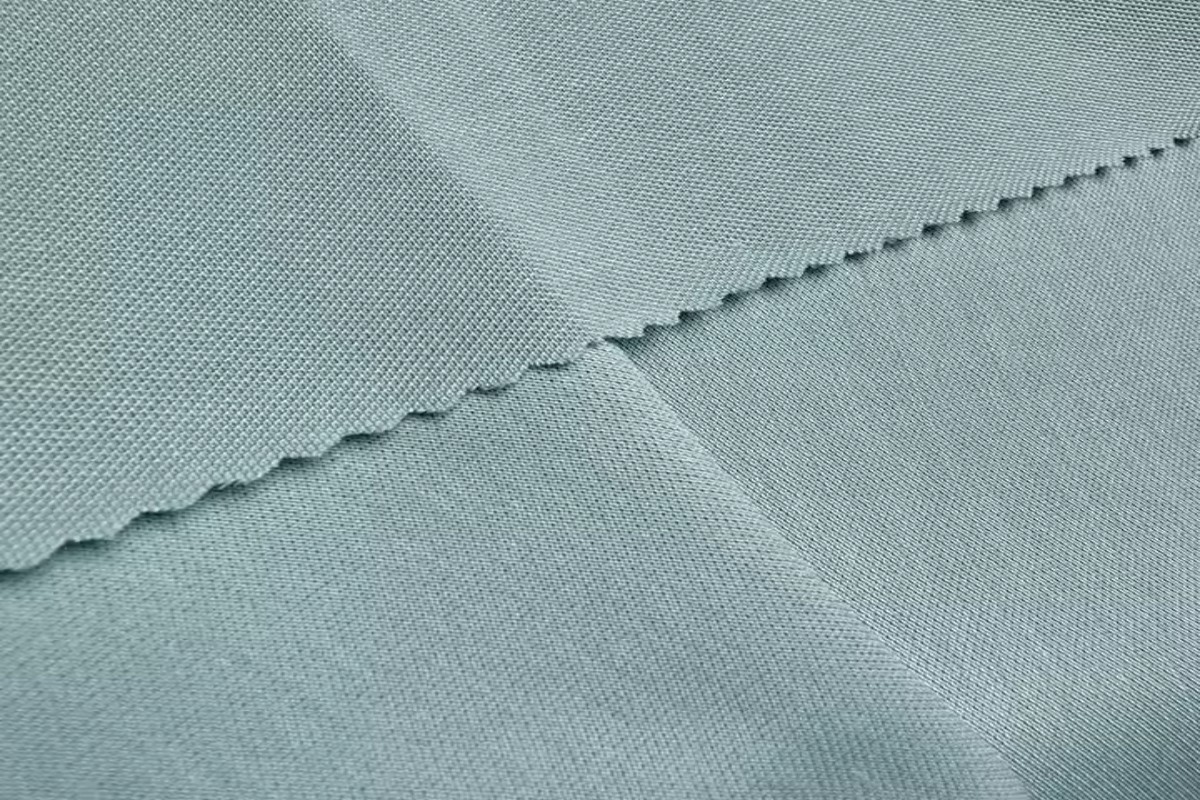How Nylon Spandex Elasticity Impacts Performance?

Nylon Spandex Fabric elasticity variations define how garments perform during intense activities. You experience superior comfort and flexibility when elasticity is balanced. Stretch nylon fabric adapts to movement, while nylon stretch fabric ensures durability. Nylon fabric blends with spandex to create recovery properties, keeping your gear functional even after repeated use.
Key Takeaways
- Nylon spandex fabrics stretch well and bounce back easily. This makes them great for activewear. Blends with 20-30% spandex are the most flexible.
- Taking care of these fabrics is very important. Wash them in cold water and let them air dry. This helps your clothes last longer.
- Knowing fabric blends helps you pick the right one. More spandex means more stretch, while more nylon makes it stronger.
What Is Nylon Spandex Fabric Elasticity?Definition and Key Properties
Nylon spandex fabric elasticity refers to the ability of the material to stretch and return to its original shape. This property makes it ideal for garments that need to move with your body. Elasticity is measured by how far the fabric can stretch without losing its shape or breaking. Nylon spandex fabrics are known for their high stretchability, which can range from 100% to 300% of their original size.
The key properties of this fabric include:
- Stretchability: It can expand significantly to accommodate movement.
- Recovery: After stretching, it snaps back to its original form.
- Durability: It resists wear and tear, even with frequent use.
These properties make nylon spandex fabrics a popular choice for activewear, swimwear, and other performance-focused clothing.
Tip: When shopping for stretchy garments, look for labels that mention nylon spandex blends. These fabrics offer the perfect balance of stretch and recovery.
Role of Nylon and Spandex in Elasticity
Nylon and spandex each play a unique role in creating the elasticity of this fabric. Nylon provides strength and durability. It ensures the fabric can withstand repeated use without tearing or wearing out. Spandex, on the other hand, is responsible for the stretch. It allows the fabric to expand and contract with ease.
When combined, these two fibers create a fabric that is both strong and flexible. This blend ensures that your clothing can handle intense activities while maintaining its shape. For example:
- Nylon: Adds resistance to abrasion and enhances the fabric’s lifespan.
- Spandex: Contributes to the fabric’s ability to stretch and recover.
The ratio of nylon to spandex in the blend determines the overall elasticity. A higher percentage of spandex increases stretch, while more nylon enhances durability.
Stretch and Recovery Characteristics
Stretch and recovery are the defining characteristics of nylon spandex fabric elasticity. Stretch refers to how far the fabric can expand when pulled. Recovery is its ability to return to its original shape after being stretched. These two features work together to provide comfort and functionality.
For instance, when you wear leggings made from nylon spandex, the fabric stretches to fit your body. Once you remove them, the material recovers its shape, ensuring a snug fit the next time you wear them. This balance of stretch and recovery is crucial for performance wear. It prevents sagging and ensures the garment stays in place during movement.
Note: Overstretching the fabric can weaken its recovery ability. Always follow care instructions to maintain its elasticity.
Nylon spandex fabric elasticity variations depend on factors like blend ratios and fabric construction. Understanding these variations helps you choose the right fabric for your needs, whether it’s for yoga, swimming, or everyday wear.
Nylon Spandex Fabric Elasticity VariationsImpact of Blend Ratios on Elasticity
The blend ratio of nylon and spandex significantly affects how the fabric stretches and recovers. A higher percentage of spandex increases the fabric’s ability to stretch, making it ideal for activities requiring a wide range of motion. For example, yoga pants often contain 20-30% spandex to provide maximum flexibility. On the other hand, a higher nylon content enhances durability and resistance to wear, which is why compression garments or swimwear may have a lower spandex ratio.
You should always consider the intended use of the garment when evaluating blend ratios. If you need something for high-impact activities, a balanced blend of nylon and spandex works best. For casual wear, a lower spandex percentage might suffice. Understanding these ratios helps you choose fabrics that meet your specific needs.
Tip: Check the fabric label for the blend ratio. It gives you a clear idea of how stretchy and durable the garment will be.
External Factors Affecting Elasticity
External factors like heat, moisture, and chemicals can alter the elasticity of nylon spandex fabrics. High temperatures weaken the spandex fibers, reducing their ability to recover after stretching. This is why you should avoid using hot water or high heat settings when washing or drying these garments. Similarly, exposure to chlorine in swimming pools or harsh detergents can degrade the fabric over time.
Humidity and prolonged exposure to sunlight also impact elasticity. Moisture can cause the fibers to lose their structural integrity, while UV rays break down the spandex component. To maintain the fabric’s performance, you should store your garments in a cool, dry place and follow care instructions carefully.
Note: Always rinse swimwear immediately after use to remove chlorine and saltwater, which can damage the fabric.
Differences in Fabric Construction
The way nylon spandex fabrics are constructed also influences their elasticity. Knitted fabrics, for instance, tend to have more stretch compared to woven ones. This is because the loops in knitted fabrics allow for greater flexibility and movement. Woven fabrics, on the other hand, are tighter and less stretchy, making them more suitable for structured garments like jackets or pants.
You’ll also notice that some fabrics have a four-way stretch, meaning they can expand both horizontally and vertically. Others only stretch in one direction. Four-way stretch fabrics are ideal for activewear, as they provide unrestricted movement in all directions. When choosing a garment, consider the type of stretch it offers and how it aligns with your activity level.
Callout: Four-way stretch fabrics are a game-changer for activities like running or dancing, where full mobility is essential.
Performance Benefits of Elasticity

Comfort and Fit in Activewear
Elasticity plays a vital role in ensuring activewear fits comfortably. Nylon spandex fabrics stretch to conform to your body shape, providing a snug yet flexible fit. This adaptability prevents discomfort during movement and eliminates the need for constant adjustments. Whether you’re running, stretching, or lifting weights, the fabric moves with you, offering unrestricted mobility.
Tip: Look for activewear with four-way stretch for maximum comfort during dynamic activities.
Durability and Longevity
The durability of nylon spandex fabrics ensures your garments last longer, even with frequent use. The elasticity helps the fabric resist wear and tear, maintaining its shape and performance over time. Unlike other materials, nylon spandex blends recover their original form after stretching, preventing sagging or deformation. This makes them ideal for high-impact activities and repeated washing cycles.
Callout: Proper care, such as washing in cold water and air drying, extends the lifespan of your nylon spandex garments.
Flexibility for Physical Activities
Elasticity enhances your ability to perform physical activities by allowing full range of motion. Nylon spandex fabric elasticity variations ensure the fabric stretches without restricting movement. Whether you’re practicing yoga poses or engaging in intense cardio, the fabric supports your movements seamlessly. This flexibility reduces strain on your body and improves overall performance.
Note: Choose garments with higher spandex content for activities requiring extreme flexibility.
Challenges and LimitationsOverstretching and Elasticity Loss
Overstretching nylon spandex fabrics can lead to permanent damage. When you stretch the material beyond its designed capacity, the fibers lose their ability to recover. This results in sagging and reduced performance. For example, pulling leggings too tightly or wearing garments that are too small can weaken the fabric over time.
To prevent overstretching:
- Choose the right size: Ensure your garments fit properly to avoid unnecessary strain.
- Follow care instructions: Wash and dry your clothes gently to maintain their elasticity.
Tip: Rotate your activewear to reduce wear and tear on individual pieces.
Sensitivity to Heat and Chemicals
Nylon spandex fabrics are highly sensitive to heat and chemicals. High temperatures can break down spandex fibers, causing them to lose their stretch. Similarly, exposure to chlorine, bleach, or harsh detergents can degrade the material.
You should avoid:
- Hot water: Wash your garments in cold or lukewarm water.
- High heat drying: Air dry your clothes instead of using a dryer.
- Chemical exposure: Rinse swimwear immediately after use to remove chlorine or saltwater.
Callout: Heat and chemicals are the biggest enemies of nylon spandex elasticity. Handle your garments with care to extend their lifespan.
Environmental Impact of Synthetic Fabrics
Synthetic fabrics like nylon spandex contribute to environmental challenges. These materials are derived from petroleum, which is a non-renewable resource. Additionally, they release microplastics during washing, polluting water systems.
To reduce your environmental footprint:
- Wash less frequently: Minimize washing to reduce microplastic release.
- Choose sustainable blends: Look for fabrics made with recycled nylon or eco-friendly spandex.
| Challenge | Solution |
|---|---|
| Microplastic pollution | Use a washing bag to trap fibers |
| Resource depletion | Opt for recycled fabric blends |
Note: Supporting sustainable fabric options helps protect the environment while enjoying the benefits of nylon spandex garments.
Maximizing Elasticity in Nylon Spandex Fabrics
Proper Care and Maintenance
Taking care of nylon spandex fabrics ensures their elasticity lasts longer. Washing them correctly is the first step. Use cold or lukewarm water and mild detergents to protect the fibers. Avoid bleach or fabric softeners, as they weaken the material. Hand washing is ideal, but if you use a machine, choose a gentle cycle.
Drying these fabrics requires special attention. Air drying is the safest option. Lay the garment flat on a towel to prevent stretching. If you must use a dryer, select the lowest heat setting.
Tip: Turn your garments inside out before washing to reduce wear on the outer surface.
Storage Tips to Retain Elasticity
Proper storage keeps nylon spandex fabrics in good condition. Fold your garments neatly instead of hanging them. Hanging can stretch the fabric over time, especially for items like leggings or swimsuits.
Store your clothes in a cool, dry place. Avoid direct sunlight, as UV rays can break down the spandex fibers. Use breathable storage bags to protect your garments from dust and moisture.
Callout: Never store damp clothes. Moisture can weaken the fabric and lead to mildew.
Choosing the Right Fabric Blend
Selecting the right blend of nylon and spandex ensures your garments meet your needs. For high-stretch activities like yoga, choose fabrics with 20-30% spandex. For durability, opt for blends with higher nylon content.
Check the label before purchasing. Look for blends designed for your specific activity. Compression wear often uses a lower spandex ratio for added support.
Note: A balanced blend offers both flexibility and durability, making it ideal for everyday use.
Nylon Spandex Fabric elasticity variations play a vital role in garment performance. By understanding these variations, you can make informed choices and care for your clothing effectively. Proper maintenance ensures your garments retain their stretch and recovery, providing comfort and durability for activities like yoga, swimming, or everyday wear.
FAQ
What is the best way to wash nylon spandex garments?
Use cold water and mild detergent. Hand washing works best, but a gentle machine cycle is also fine. Avoid bleach and fabric softeners.
Tip: Turn garments inside out before washing to protect the outer surface.
How can you tell if a fabric has four-way stretch?
Stretch the fabric in both horizontal and vertical directions. If it expands both ways, it has four-way stretch. This feature enhances mobility during activities.
Can nylon spandex fabrics lose elasticity over time?
Yes, improper care like overstretching, exposure to heat, or harsh chemicals can weaken elasticity. Follow care instructions to maintain the fabric’s stretch and recovery properties.
Note: Rotate your garments to reduce wear and tear on individual pieces.
Media Contact
Company Name: Shaoxing Yun Ai Textile Co.,Ltd
Email: Send Email
Phone: 0086-13656855796
Country: China
Website: https://www.iyunaitextile.com/




